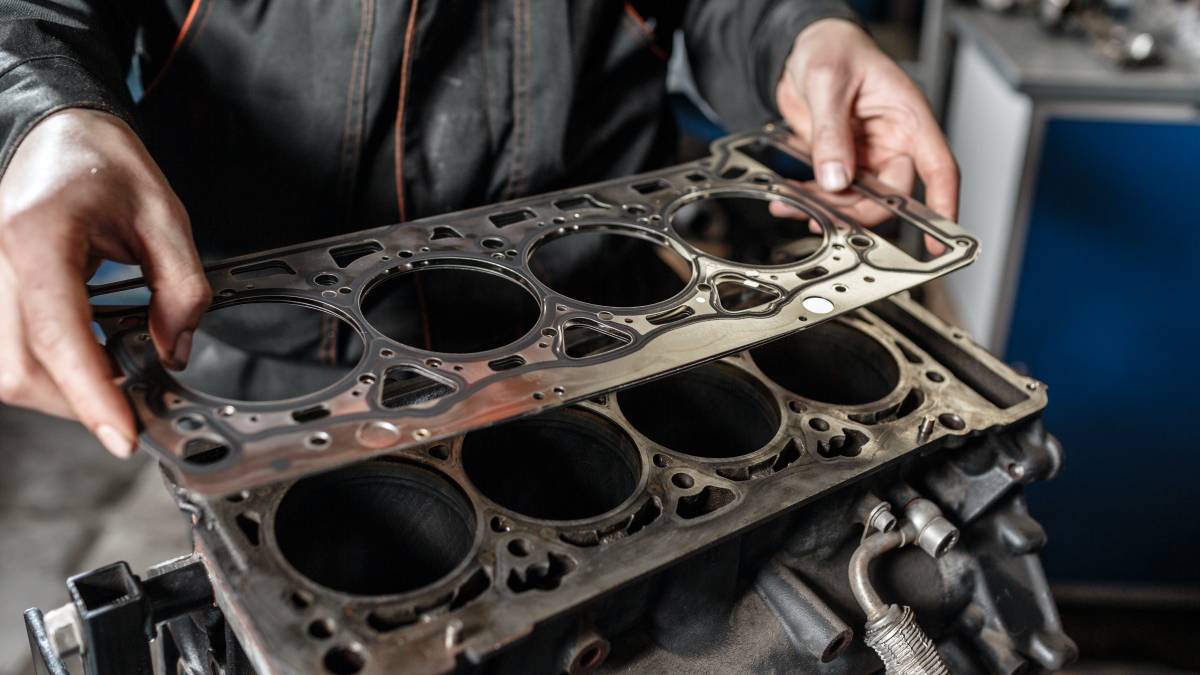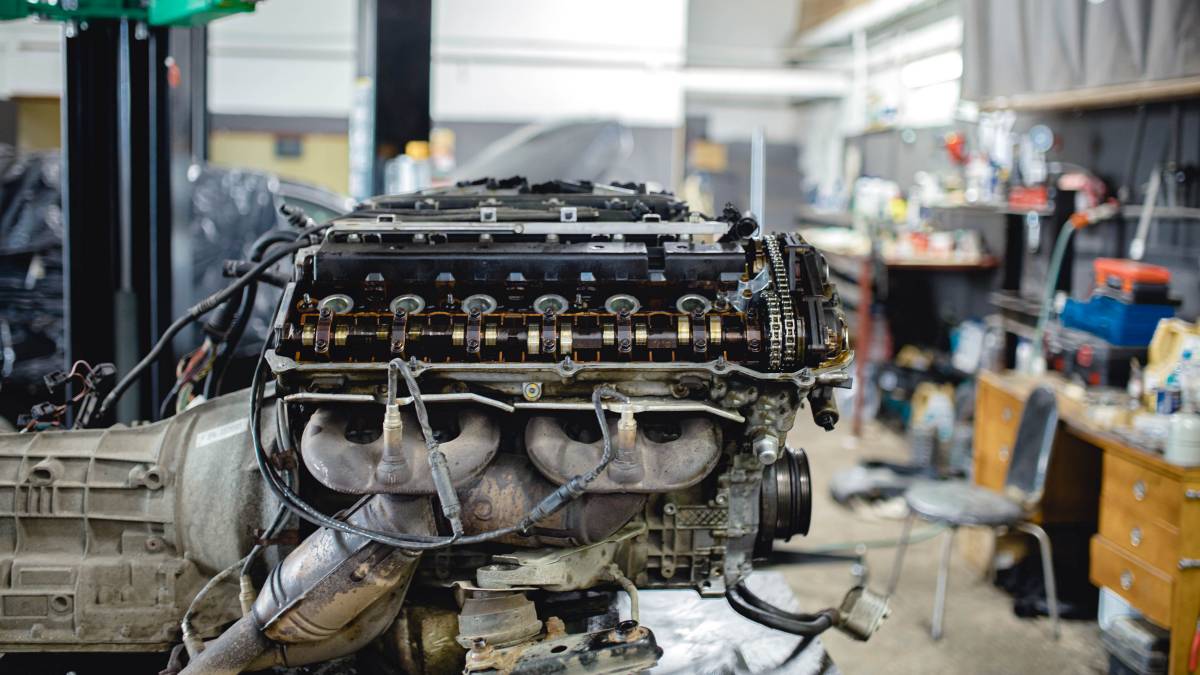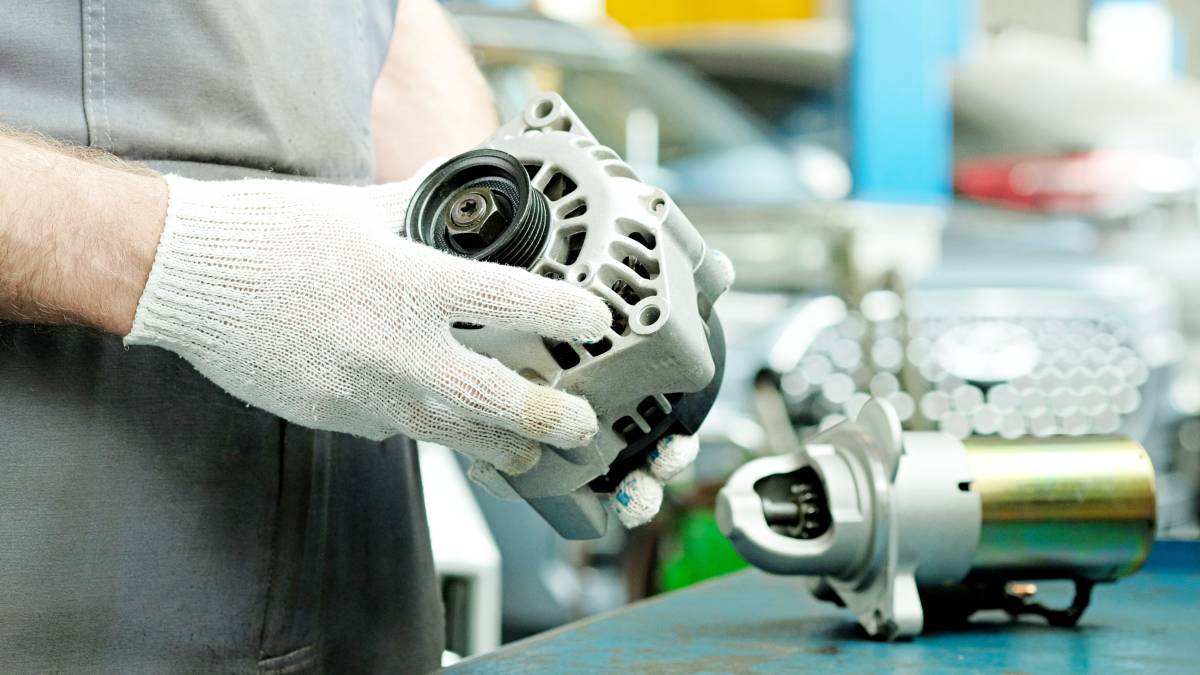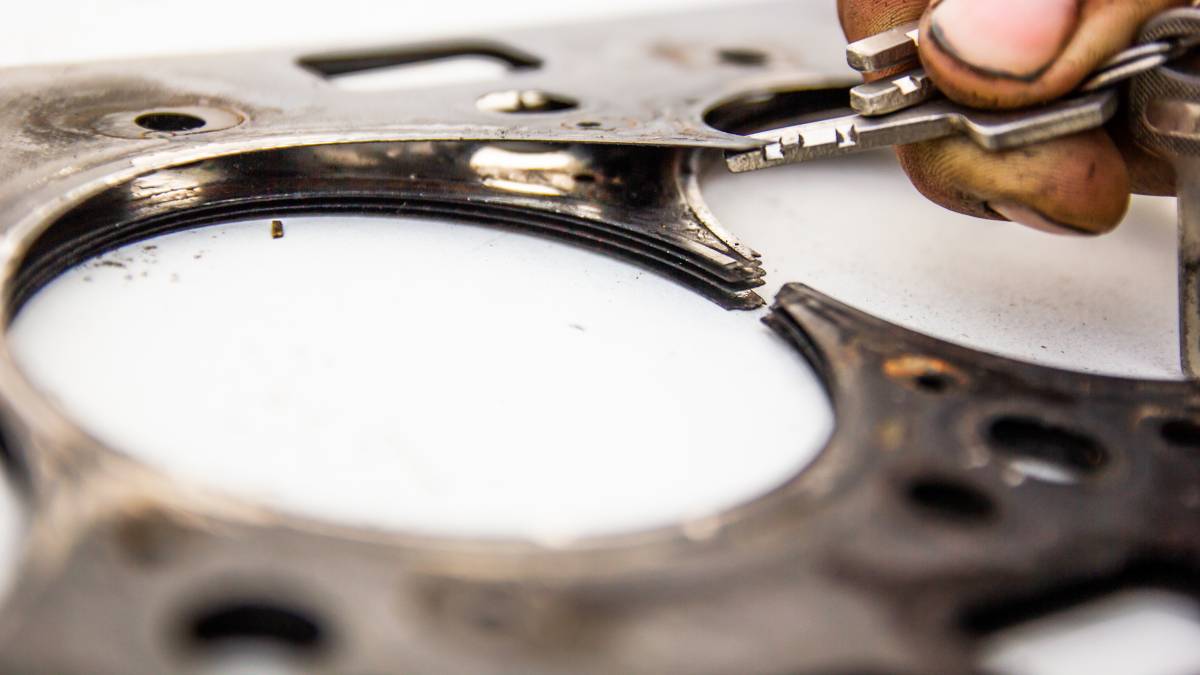- Home/
- Costs/
- Engine Replacement/
- Engine Replacement Cost Guide
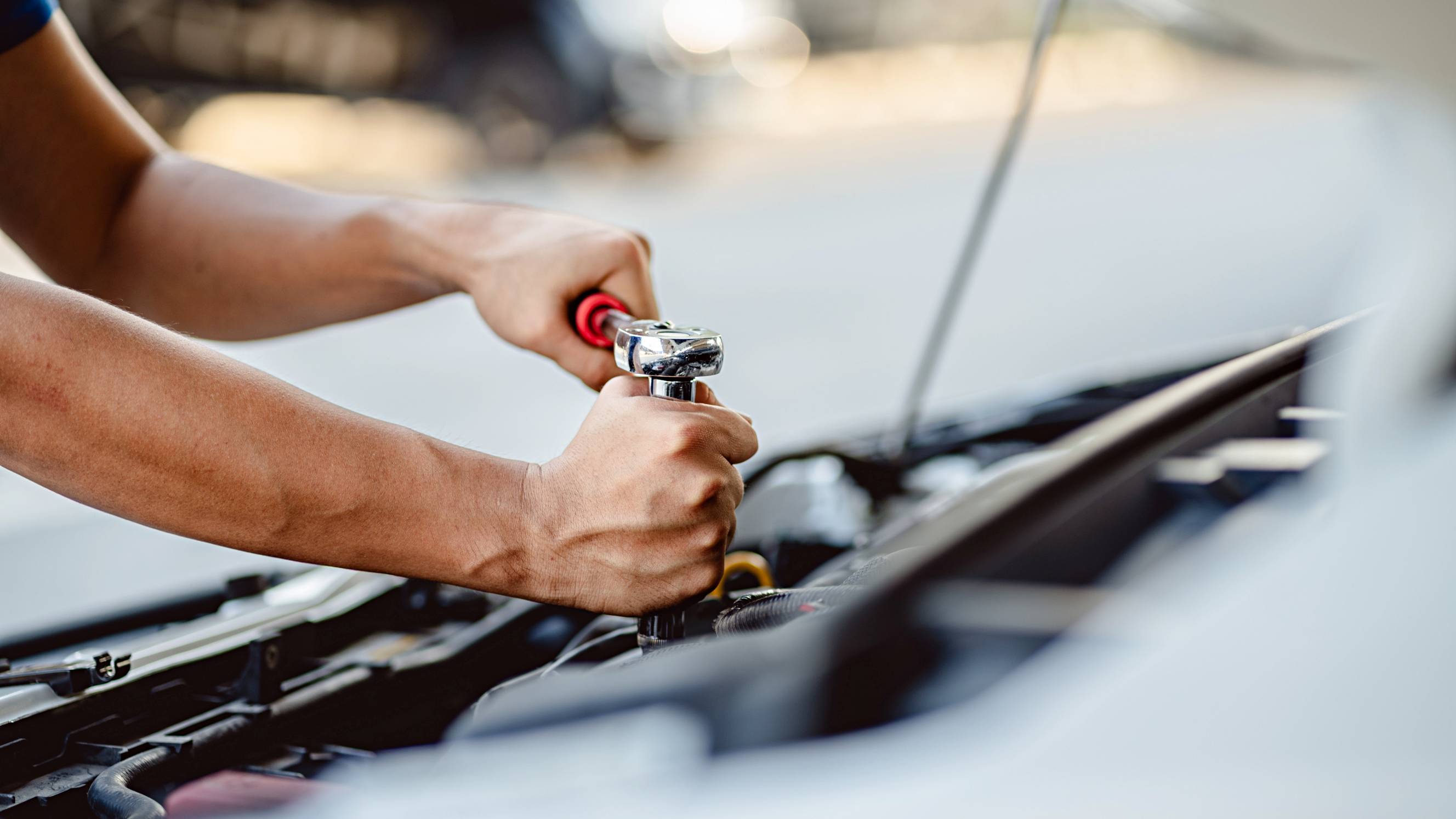
How much does engine replacement cost in Australia?
Get a free quote nowPost to find a price. It's free and only takes a minute.
Price (part + labour)
$3,096 - $11,097
low
$3,096
median
$7,095
high
$11,097
Last Updated on

Written by Cielo B.
Staff Writer
Read more about our contributor
Key Facts
- Replacing a car engine in Australia can cost $3,096 to $11,097, depending on the vehicle’s make and model and the mechanic’s labour cost.
- In major cities like Sydney, Melbourne, and Canberra, the average labour costs of engine replacement are $1,195, $1,270, and $1,273, respectively. Meanwhile, smaller cities like Geelong and Wollongong have slightly lower averages of $1,160 and $1,218.
- Engine replacement may necessitate upgrades or repairs to the transmission, cooling, electrical, and fuel systems to ensure compatibility and performance.
- To reduce costs, consider ensuring engine compatibility, shopping around for mechanics, using refurbished engines, reusing compatible parts, and avoiding unnecessary upgrades.
Are you having second thoughts about letting go of an old car, even though it has multiple issues, because it has sentimental value? By replacing its engine, you can restore its original condition and improve its performance.
So, how much does it cost to replace an engine? The engine replacement cost in Australia ranges from $3,096 to $11,097. Factors like the car’s make and model and the mechanic’s labour rates can affect the price.
When should you consider changing your car’s engine?
 A car with an overheating engine (Source: iStock)
A car with an overheating engine (Source: iStock)
Since the total price to change an engine can go through the roof, it’s good to assess the car’s condition before deciding. Maybe your car just needs a good cleaning in the engine bay. Faulty sensors can also be a culprit in performance engine issues, so replacing them can be the solution. So, have a mechanic look over the car for quick engine diagnostics.
However, if you already notice these signs, it’s time for an engine replacement:
Constant overheating
Always pay attention to the temperature gauge on the dashboard. If it’s near the red zone, it indicates that the car is overheating. Smoke or steam could also be coming from the hood while the engine is running.
If these happen often during long drives, it could be a sign of a cracked engine block. This is the metal part that houses the critical components of an engine, so if it’s cracked, it can cause the coolant (which prevents the car from overheating) to leak and mix with the engine oil.
Engine oil problems
If you recently had an oil and filter change but the car still needs frequent oil top-offs even though there are no signs of leakage, there’s a problem with the engine. It could be because a worn-out oil pump is clogging the engine’s oil passages.
You can also check the Dashboard Oil Warning Light to inspect engine oil problems. If it’s on, this indicates that the car has low oil pressure due to a worn-out or clogged oil pump. It’s vital to address the issue fast because this can lead to engine failure.
Excessive exhaust smoke
One tell-tale sign of needing an engine replacement is if there’s so much smoke coming from the exhaust pipe. You can actually tell what’s wrong with the engine based on the colour of the smoke. If it’s blue, the engine’s piston rings and valve seals are worn out, causing the engine oil to leak into the combustion chamber. As a result, the engine burns too much oil, reducing the efficiency of your car.
Meanwhile, if it’s black smoke, the fuel injectors are faulty, so your car’s engine burns more fuel than necessary. Your vehicle can also produce thick white smoke. This could mean that the coolant leaked into the combustion chamber due to a cracked engine block.
Strange engine noises
As a car owner, there are four strange engine noises to look out for: knocking, tapping, clicking, and grinding. Knocking noises indicate that the engine’s internal parts are damaged. They are more noticeable when you press more on the gas pedal.
On the other hand, tapping and clicking noises mean low oil pressure. As for grinding noises, they could be due to internal engine damage that causes the metal parts to clash.
Recurring check engine light
The dashboard’s check engine light (CEL) or the amber-coloured engine icon functions as your car’s diagnostic system. If it lights up steadily, you don’t have to panic because this means that the engine has a minor issue. But if it blinks repeatedly like flashing lights, it signifies a severe engine problem that could lead to a full engine replacement.
High mileage with frequent repairs
It’s normal for vehicles with high mileage to undergo car engine repair because as vehicles accumulate miles, they increasingly experience wear and tear, so various mechanical issues arise. However, if they undergo several major repairs and are still acting up, replacing the engine may be more cost-effective.
What are the average costs of engine replacement in Australia?
How much does it cost to change an engine? In Australia, the average car service cost is $1,237. However, prices vary widely depending on the car mechanic’s location. For instance, car mechanics in metropolitan areas such as Sydney, Melbourne, Brisbane, Adelaide, Gold Coast, and Canberra have bigger service rates to cover higher rent and utilities.
Meanwhile, those who work in garages in less populated cities like Geelong, Wollongong, and Cairns offer lower mechanic fees. If the area has limited service providers, they may charge higher, sometimes almost equal to or more than the car mechanics in major cities.
| City | Average Labour Cost of Engine Replacement |
|---|---|
$1,195 |
|
$1,270 |
|
$1,198 |
|
$1,189 |
|
$1,224 |
|
$1,231 |
|
$1,250 |
|
$1,273 |
|
$1,375 |
|
$1,160 |
|
Wollongong |
$1,218 |
$1,260 |
What factors affect the costs of engine replacement?
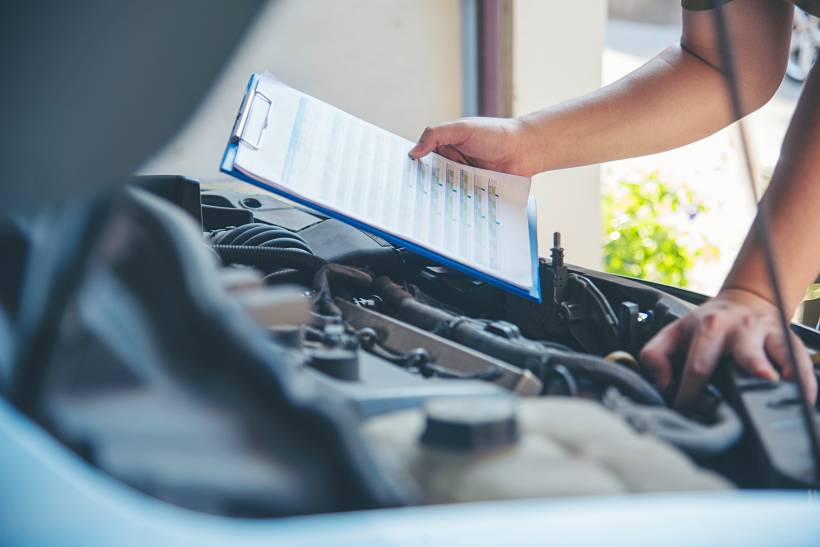 A mechanic checking for car engine issues (Source: iStock)
A mechanic checking for car engine issues (Source: iStock)
Other factors can raise the price of an engine replacement and the service cost. We’ll discuss them extensively in this section.
Vehicle make and model
The type of engine you’ll need for replacement depends on the make and model of the vehicle. High-performance models such as the Ford Ranger 3.2 and Mazda BT-50 have more expensive engines than others because they typically have turbocharger technology.
Engine prices can also change depending on the age of the vehicle and the type of parts used. Older models like the Holden Commodore VE and Nissan ZD30 are more costly, as their original equipment manufacturer (OEM) engine parts are rare and difficult to find.
Although aftermarket parts produced by third parties are more affordable, some might have many compatibility issues, burdening car owners with additional repairs and costs.
Here are the estimated engine replacement prices of some of the popular vehicle models in Australia.
| Vehicle | Average Engine Replacement Cost |
|---|---|
Ford Ranger 3.2 |
$4,048 |
Nissan Navara D40 |
$2,690 |
Mazda BT-50 |
$7,317 |
Holden Commodore VE |
$5,910 |
Holden Cruze |
$1,936 |
Hyundai i30 |
$4,333 |
Mitsubishi Triton |
$4,571 |
Volkswagen Amarok |
$8,051 |
Holden Colorado |
$9,962 |
Hyundai iLoad |
$5,700 |
Toyota HiAce |
$6,175 |
Nissan ZD30 |
$5,669 |
Engine type, size, and condition
Car engines come in many types and sizes. The most common ones are gasoline, diesel, and hybrid. Among the three, gasoline engines are the most affordable, as shown in the table below. This is because they are found in various vehicles, including passenger cars and small vehicles, making it easier to source their parts.
Conversely, diesel engines are more expensive because they include complex components like turbochargers (to enhance the engine’s power) and diesel particulate filters (to help reduce harmful exhaust emissions). They are common in trucks, sedans, and SUVs.
Lastly, hybrid engines are the most costly because, in addition to overhauling the traditional engine components, they require replacing the battery. In Australia, battery replacement can range from $150 to $1,000.
| Engine Type by Fuel | Average Replacement Cost |
|---|---|
Petrol (Gasoline) engine |
$13,880 |
Diesel engine |
$22,870 |
Hybrid engine |
$22,238 |
A car’s engine size can also affect the total cost of full engine replacement. Vehicles with small engines, like the Ford Fiesta and Honda Civic, have lower costs because their engines are simple and do not have turbochargers, unlike midsize sedans and crossovers. High-performance cars with large engines are even more expensive because they require engineering fuel technologies.
The condition of the engine you plan to purchase can impact the overall cost of replacing an engine. New engines are, of course, the ideal option due to zero wear. Plus, they usually come in full warranties. So, how much does a new engine cost? In Australia, it’s around $29,000 or more.
You can opt for used engines to save money, but they typically have not-so-obvious issues, such as worn-out bearings and gasket leaks. There are other better options, like rebuilt and reconditioned engines. When it comes to rebuilt engines, car mechanics only replace the worn-out parts, while reconditioned ones are built to restore them to near-original condition.
Required parts and materials
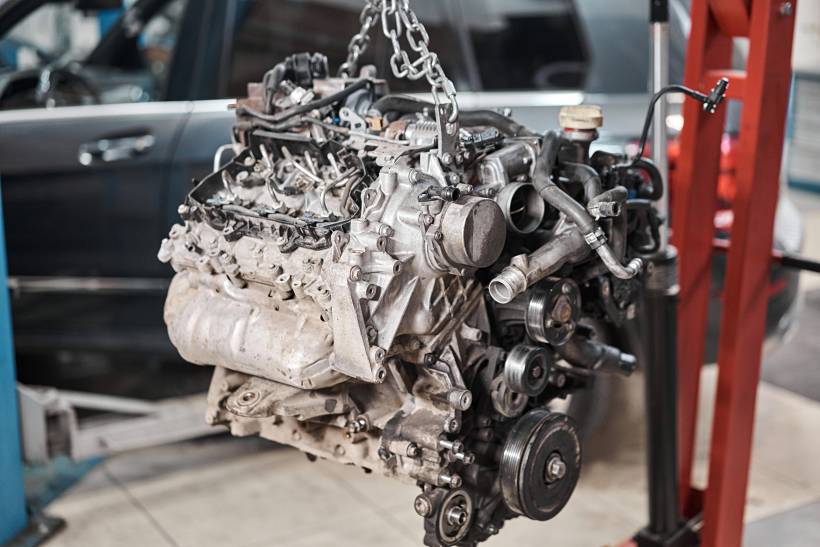 A close-up of a car engine and its parts (Source: iStock)
A close-up of a car engine and its parts (Source: iStock)
A car engine comprises various parts, each grouped into different components. Since the list could be overwhelmingly long, focus on the essentials when considering an engine replacement:
| Component | Description |
|---|---|
Engine block |
Core of the engine that houses the critical components. |
Cylinder head |
Serves as the seal at top of the engine block. Controls the flow of air and fuel into the engine and the expulsion of exhaust gases. |
Pistons |
Responsible for converting the fuel and air into power for the engine to work. |
Crankshaft |
Activates the flywheel inside the engine so the car can move smoothly forward. |
Camshaft |
Controls the operation of the intake and exhaust valves in the engine to prevent overheating and stop harmful car emissions from escaping. |
Timing belt/chain |
Made of high-strength belt rubber and steel. Responsible for ensuring that all engine parts move smoothly. |
Fuel injectors |
Function as supporting engine components that deliver fuel into the engine in just the right amount. |
Gaskets |
Act as a seal to prevent oil, coolant, and gas leaks. |
The engine block and cylinder head are the most expensive parts, as they form the core of the engine. Expect the crankshaft, camshaft, and pistons to cost a lot, too, because they are often made of aluminium and steel and require high-precision machining.
Labour fees
When it comes to labour cost, replacing an engine in Australia depends on the location, garage, specialisation, and total labour time. If we talk about location, mechanics from urban areas charge more because of the higher cost of living. For instance, labour rates in Sydney and Melbourne can be up to $200 per hour, while in regional areas, they can start as low as $70 per hour.
Now, if a mechanic works with dealerships that sell new and used cars, the labour fees are higher, reaching up to $250 per hour. Some would even charge as high as $300 per hour for high-performance vehicles. Hiring a mechanic from an independent garage is more practical because the labour rates are 20% to 40% cheaper than dealership services.
If going to a garage seems like a hassle, you may hire a mobile mechanic. Bear in mind that mobile mechanics charge an additional call-out fee, ranging from $130 to $220 for the first 30 minutes and around $75 to $95 for every subsequent 30 minutes. This is the extra labour cost for hiring them outside their regular working hours or on weekends.
Labour time can also be a factor in car engine replacement. For reference, changing a car engine can take 8 to 15 hours, so you can immediately calculate the estimated labour fees from here.
Additional repairs or enhancements
Although replacing an engine can help improve vehicle performance, it can also lead to future mechanical issues if the engine is incompatible with the car’s other components. So, to prepare yourself for possible extra costs, consider these additional car repairs or enhancements:
Transmission upgrades or repairs
The transmission transfers power from the engine to the wheels, helping regulate the vehicle’s speed. Its primary function is to adjust the gear for a smoother and more efficient ride. Your vehicle transmission must be compatible with the new engine since a mismatch can result in premature wear and failure.
A mechanic could assess the transmission first to see which parts need repairing or upgrading. These could be the clutch packs (which enable gear changes) or torque converters (which help the car start and stop without stalling the engine).
Cooling system maintenance and upgrades
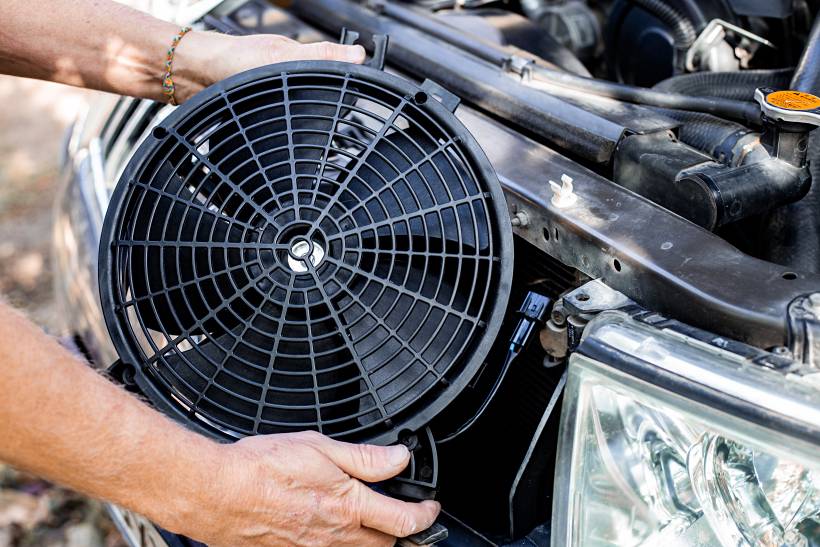 A mechanic installing a new engine cooling fan (Source: iStock)
A mechanic installing a new engine cooling fan (Source: iStock)
New engines can generate more heat, requiring upgrading your car’s cooling system. This prevents overheating and possibly damaging critical engine components such as the cylinder head or head gasket.
When it comes to cooling system maintenance and upgrades, usually you’ll have to install high-performance radiators to handle the increased heat load. Adding electric mechanical fans can also improve cooling efficiency.
Electrical system adjustments
Each car engine is unique, so every type has specific electrical requirements. So, if you have already decided to replace the engine, prepare for some electrical adjustments, such as reprogramming or replacing the engine control unit (ECU) to ensure it’s compatible with the new engine sensors and components. You might also need to upgrade the alternator and battery for a consistent power supply.
Fuel system adjustments
Your car’s existing fuel pump and injectors might not meet the new engine’s flow and pressure requirements. Fixing this issue is vital; otherwise, the engine will run with inadequate fuel, causing it to overheat. To solve this, you may have to install a new fuel pump with a higher flow rate and pressure. Upgrading the fuel injectors may be necessary, too, since they supply the correct amount of fuel for the new engine.
Engine mount and drivetrain compatibility checks
The engine mount supports the motor to keep it aligned within the engine bay. It must be in good condition to mitigate vibrations and prevent damage to the drivetrain, which houses the car’s transmission parts.
Warranty coverage
New cars in Australia may come with a warranty, but it can only be used for engine replacements if the failure is due to a manufacturing defect.
Meanwhile, used cars (from licensed traders) that meet specific criteria—such as being less than 10 years old and having travelled less than 160,000 kilometres—often include a statutory warranty. This covers engine defects for three months or 5,000 kilometres, whichever occurs first. However, the defect must not have been disclosed before the sale and must not be due to regular wear and tear or misuse.
You also have consumer rights under Australian Consumer Law, which offers protection beyond manufacturer or statutory warranties. This ensures that the new or used car must be of acceptable quality and fit for purpose. If engine failure occurs outside the standard warranty period, you may still be entitled to a repair, replacement, or refund.
Like other warranties, these do not cover engine replacements caused by normal wear and tear or lack of maintenance.
What are some ways to save on engine replacement?
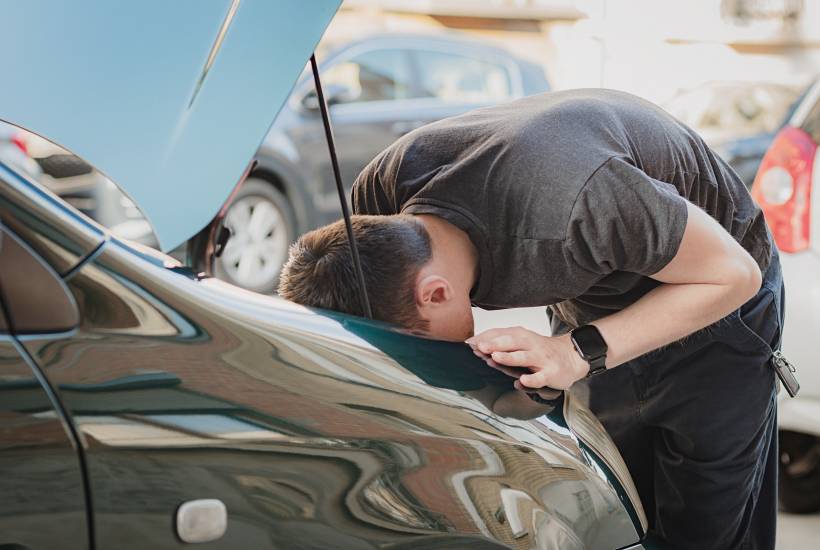 A young man looking deep into the open hood of a car (Source: iStock)
A young man looking deep into the open hood of a car (Source: iStock)
Engine replacement can, indeed, burn a hole in your pocket. Fortunately, there are some ways to reduce the financial burden. Here are some tips to help you save a few bucks on replacing a car engine:
1. Ensure the engine is compatible
Compatibility issues will only lead to more expensive rework, so consult a reputable mechanic before you buy engine parts. They can advise on the modifications required for different engine models. You can also check your car’s manual or visit the manufacturer’s website to understand which engine size, type, and mounting points are required for your vehicle.
2. Shop around for the right mechanic
Although hiring a mechanic near you is easier, it’s better to contact multiple mechanics or garages first and ask for detailed costs. This way, you can compare the charges for labour and parts, finding the most cost-effective option. It would also help to look up some reviews online to check their credibility.
3. Consider refurbished or rebuilt engines
Although brand-new engines are the best, you should look into refurbished or rebuilt engines from other cars, especially if you have an old one. These engines have been tested and restored for quality, making them more affordable. Inspect them for wear and tear first, and always bring a mechanic to check their quality.
4. Reuse compatible parts
Some other parts in your car, like the motor mounts, oil pans, and wiring harnesses, could still be useful for the new engine. Have a mechanic inspect these parts to see if they are still in good condition and compatible with the new engine.
5. Avoid impulse upgrades
Although we’ve listed some necessary upgrades earlier, it doesn’t mean you have to pick them all. Sometimes, you only need to upgrade the cooling and suspension, helping you save more resources. Again, it’s wise to consult a mechanic before getting car upgrades.
Avoid or resolve car engine troubles with Airtasker
The engine is one of the most critical parts of your vehicle, and replacing it on your own might do more harm than good. If you need convenient access to car engine replacement experts, you can find them on Airtasker. Simply post a task, wait for offers, and pick a Tasker with in-depth knowledge of your vehicle’s make and model.
In addition to helping you source quality parts from reputable suppliers, they can install the new engine and check for compatibility issues. With Airtasker, car engine problems don’t have to be so troublesome.
Learn more about our contributors

Written by Cielo B.
Staff Writer
Cielo is an experienced content writer who has explored various industries throughout her career. Her expertise, founded on a degree in journalism, includes writing about automotive and vehicle maintenance. She’s an avid car enthusiast who loves driving through lush rural areas with her old (but reliable) manual car. Cielo also covers topics like dressmaking, tailoring, and photography since she is a passionate cosplayer who enjoys dressing up as her beloved anime characters.
FAQs on engine replacement
Yes, it’s worth replacing an engine in an older car if it’s still in good condition and you want to improve its performance. Not only does it help extend its life, but it can also help you save money since engine replacement is more affordable than buying a new car.
However, if your car has high mileage and its components are starting to wear out, getting a new engine isn’t practical and may only cause further problems.
If a skilled mechanic does the job, gas and diesel engines usually take 5-12 hours. Hybrid cars and trucks take longer because their engines are bigger and more complex.
An engine rebuild is cheaper, ranging from $300 to $4,500. In contrast, a full engine replacement can cost around $7,095 or more. However, if the damaged engine is severe, engine rebuilds sometimes exceed the total cost of an engine replacement. Additionally, the quality of parts can vary, so the estimated rebuild cost can still change.
First, you’ll have to assess the situation and determine if your engine truly needs a replacement. This way, you can tell the mechanic exactly the issues you’ve noticed. Next, gather the necessary tools and supplies and prepare a clean, spacious area to work on the car.
If you’re experienced enough, you can start removing some parts, like the hood and front bumper, draining all fluids from the engine, disconnecting the battery, and removing the engine mount. It’s still best to let a professional handle the preparations to avoid complications during the engine replacement.
Find engine replacement experts, fast
Post a task
Related price guides
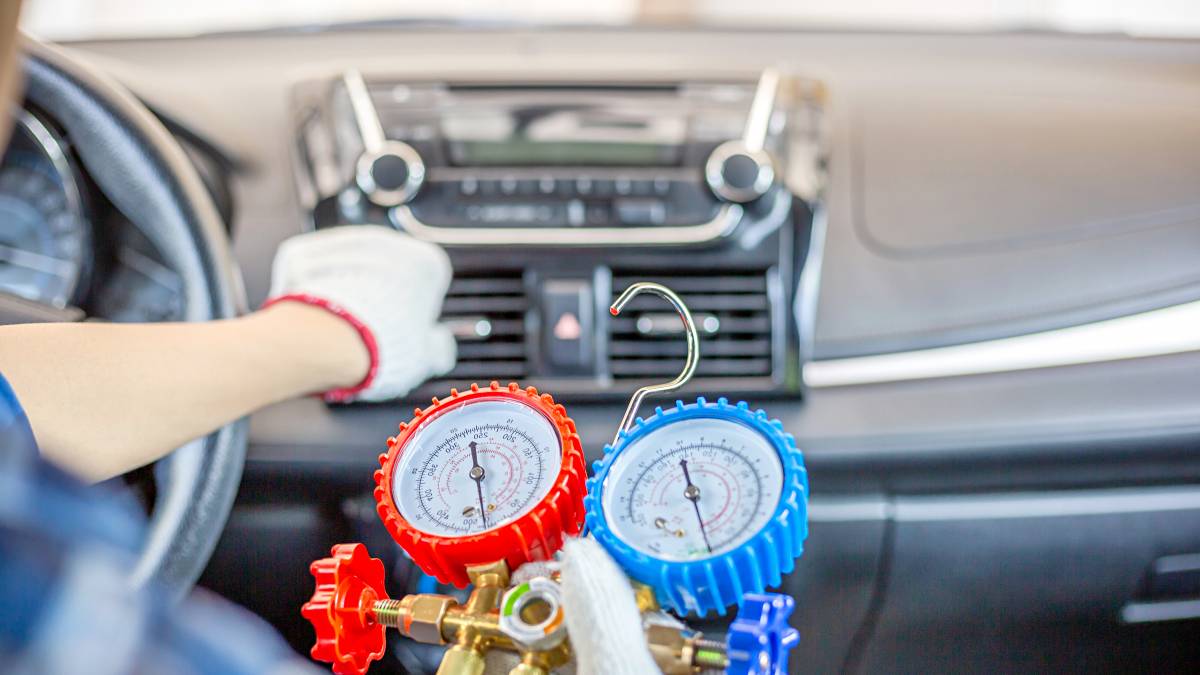
How much does car AC repair cost?
Read more
Related articles
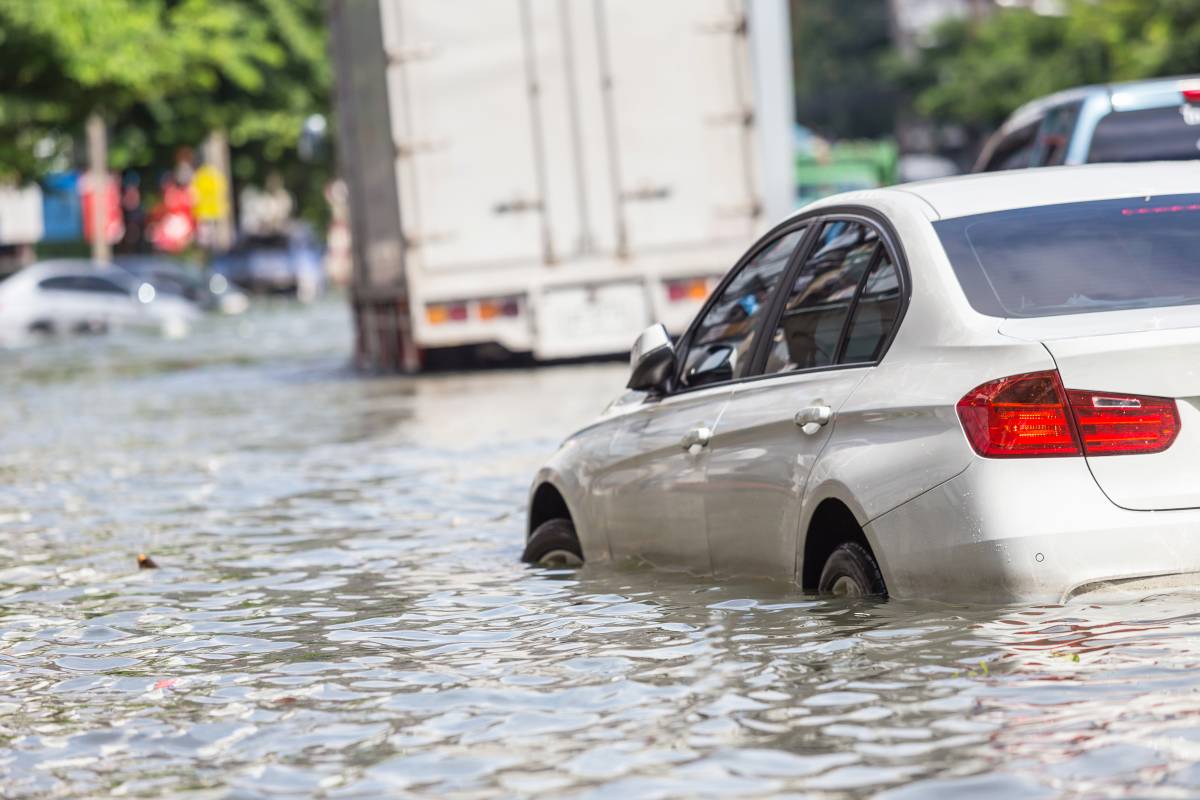
What to do if your car was flooded
Read more
